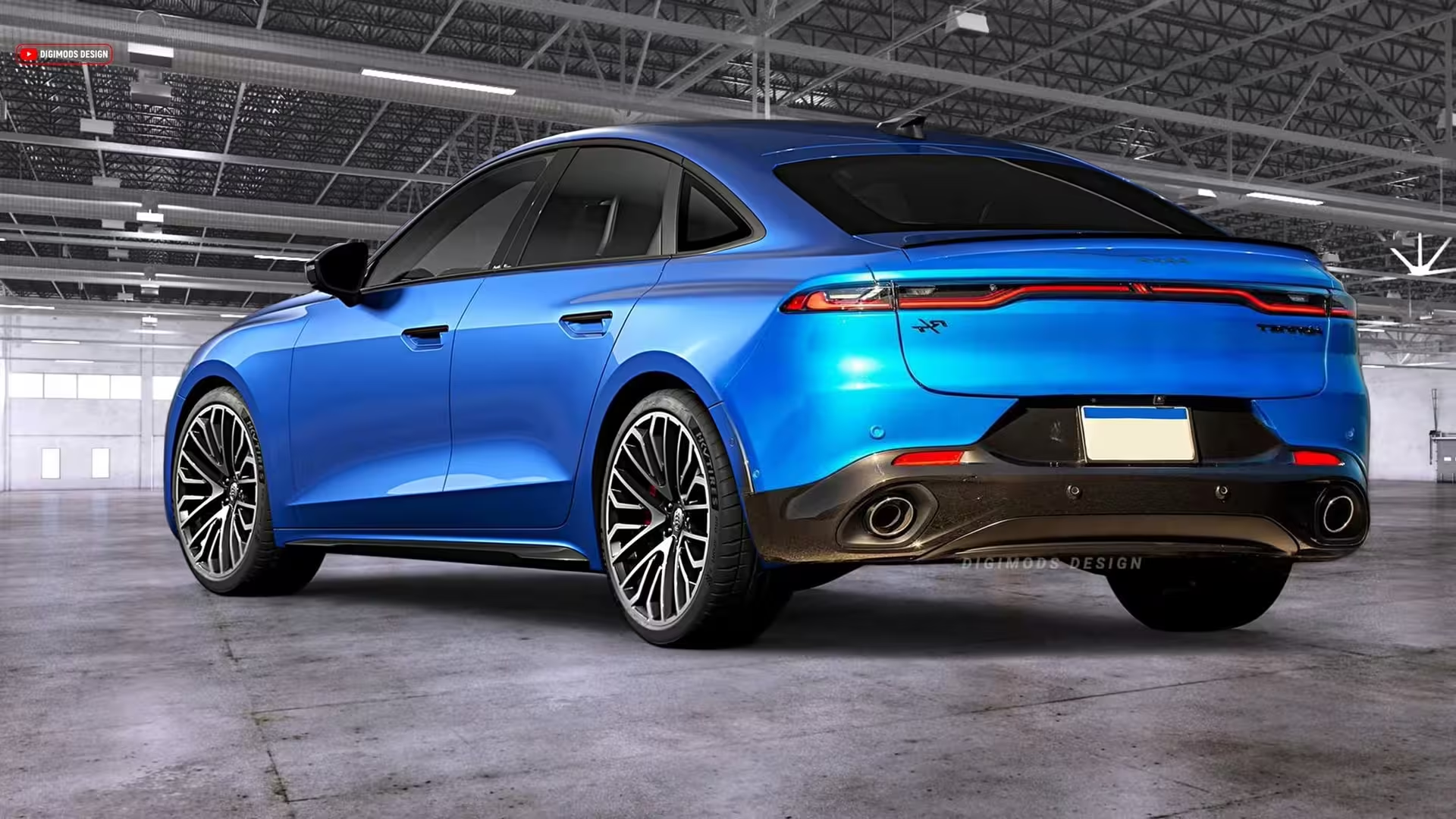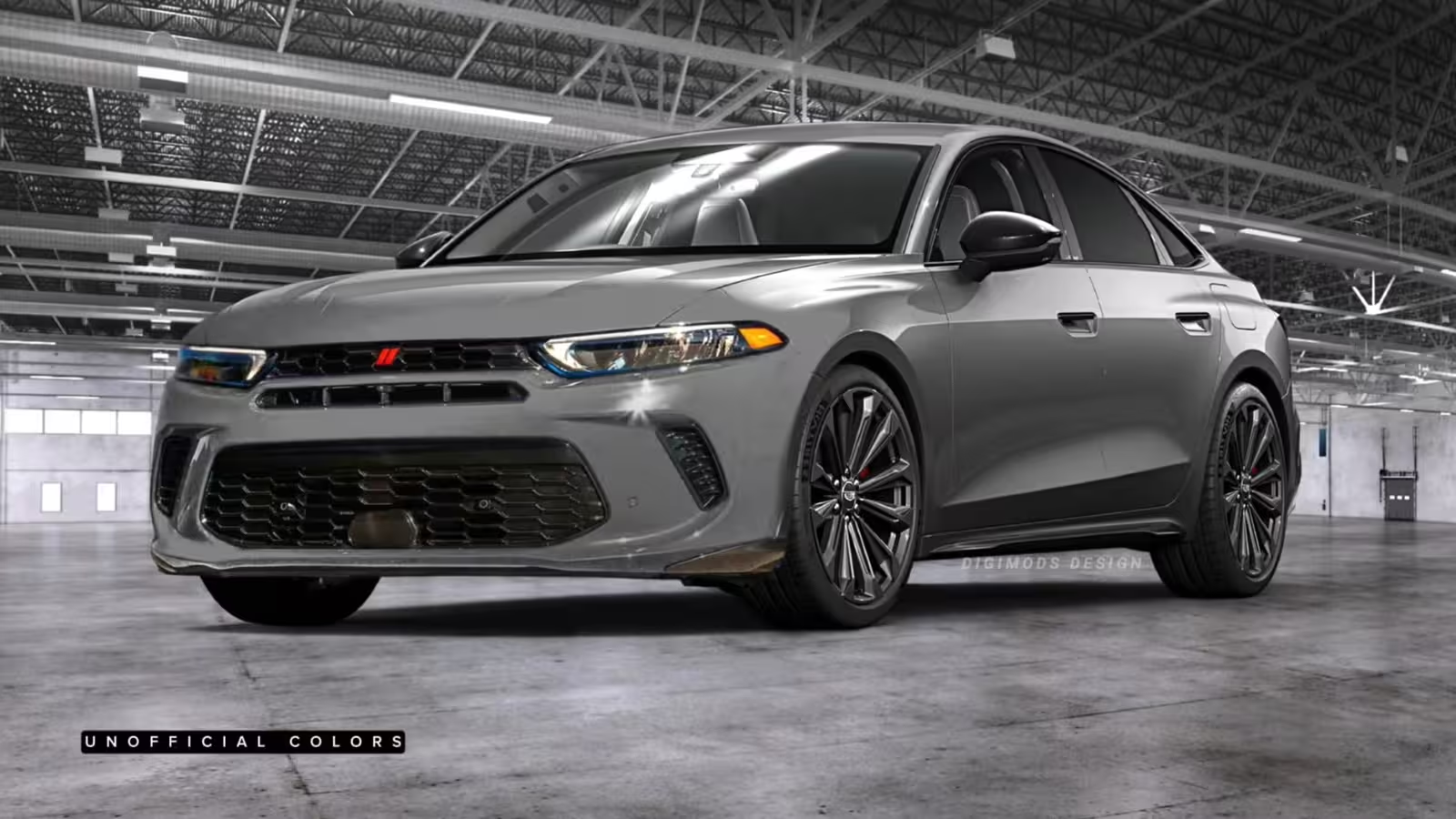4 Minutes
The Return of the Dodge Stratus—Virtually Reimagined for 2026
As the automotive landscape continues its pivot toward SUVs and crossovers, sedans are increasingly rare among the iconic Detroit automakers. Yet, while brands like Ford, Chevrolet, and Dodge now offer only a handful of passenger cars—such as the Ford Mustang, Chevrolet Corvette, and Dodge Charger—enthusiasts and digital creators are keeping the legacy of classic sedans alive in the virtual realm through innovative CGI artistry.
Enter Dimas Ramadhan, the digital visionary behind the "Digimods DESIGN" YouTube channel. Renowned for bringing beloved cars back to the spotlight through advanced computer-generated imagery, Ramadhan has now set his sights on reviving the Dodge Stratus, a nameplate that disappeared from showrooms two decades ago. While this 2026 Dodge Stratus exists solely in the digital space, its cutting-edge virtual design and high-tech features demonstrate how technology is reshaping automotive nostalgia and stoking excitement among car enthusiasts.
A Digital Resurrection Fueled by Technology
Stratus: A Name Reborn Through CGI Innovation
The original Dodge Stratus, produced between 1995 and 2006, was once a staple of the midsize sedan segment. It shared its Chrysler JA platform with the Plymouth Breeze and Chrysler Cirrus, with later evolutions inspiring models such as the Chrysler Sebring. Despite an initial wave of positive reviews, the Stratus eventually faded from consumer interest, ultimately replaced by the Dodge Avenger. Yet thanks to the power of digital design and automotive CGI, the Stratus is experiencing a remarkable modern revival.
Ramadhan’s digital rebirth of the Stratus merges contemporary automotive trends with nods to the past. Leveraging the robust DNA of Dodge’s latest compact SUV—the Dodge Hornet—this virtual Stratus features forward-thinking technology, advanced design language, and an eco-friendly powertrain. The front end sharply echoes the Hornet’s signature styling, including identical headlights, a double slim grille, prominent central air intake, and vertical slats—all seamlessly fitted into a four-door sedan silhouette.

Design Features and Futuristic Technology
Blending Modern Aesthetics With Classic Sedan Proportions
The 2026 CGI Dodge Stratus doesn’t just mimic the Hornet—it thoughtfully adapts its muscular lines for a sedan configuration. Sporting Cadillac-inspired graphite alloy wheels for a hint of luxury, the profile remains true to classic sedan form, ensuring the revived design feels both progressive and authentic. At the rear, the Stratus borrows the Hornet R/T’s slim, full-width LED taillights and considerable dual exhaust outlets, further emphasizing its modern performance credentials.
Genuine attention has been paid to proportion and ergonomics, ensuring these design elements fit harmoniously into a sedan’s shape without appearing forced—a testament to the sophistication of modern digital design tools. The finished product not only looks production-ready but also serves as inspiration for how automakers can use innovative technology to revisit—and reinvent—classic nameplates.
Powertrain & Hybrid Technology: A Vision for Electrified Mobility
Should the new Stratus leap from pixels to pavement, it could inherit the Hornet R/T’s plug-in hybrid technology. Imagine a high-efficiency, dual-motor AWD sedan with 288 horsepower and a 15.5 kWh lithium-ion battery pack—allowing for more than 30 miles of all-electric range per charge. Such a configuration wouldn’t just honor the original Stratus’s accessible performance, but would also push it firmly into the era of sustainable, tech-forward mobility.
Market Implications and Industry Relevance
Virtual Concept Cars: Shaping the Future of Automotive Design
Digital concept cars like the 2026 CGI Dodge Stratus are redefining how automakers, designers, and tech enthusiasts approach vehicle innovation. With computer graphics and virtual modeling now integral to car development cycles, these digital revivals are more than fan art—they’re proof-of-concept representations that showcase the intersections of nostalgia, advanced design software, and the future of electric vehicles.
Use Cases for Tech Professionals and Automotive Innovators
For technology professionals and automotive engineers, the digital Stratus demonstrates how 3D rendering, AI-driven design, and VR visualization tools can accelerate the creative process, reduce prototyping costs, and foster collaboration across global teams. As companies increasingly adopt virtual technologies in their R&D workflows, such projects pave the way for faster iteration, more inclusive design thinking, and enhanced market responsiveness.
The Bottom Line: A Digital Dream Fueling Tomorrow’s Automotive Reality
While the 2026 Dodge Stratus may exist only in digital concept form for now, it stands as a striking example of how technology, creativity, and nostalgia can blend to shape the future of both automotive design and the broader mobility sector. With advancements in CGI and hybrid tech, projects like these not only captivate enthusiasts but also point to new opportunities for innovation in an ever-evolving industry.
Source: autoevolution



Comments